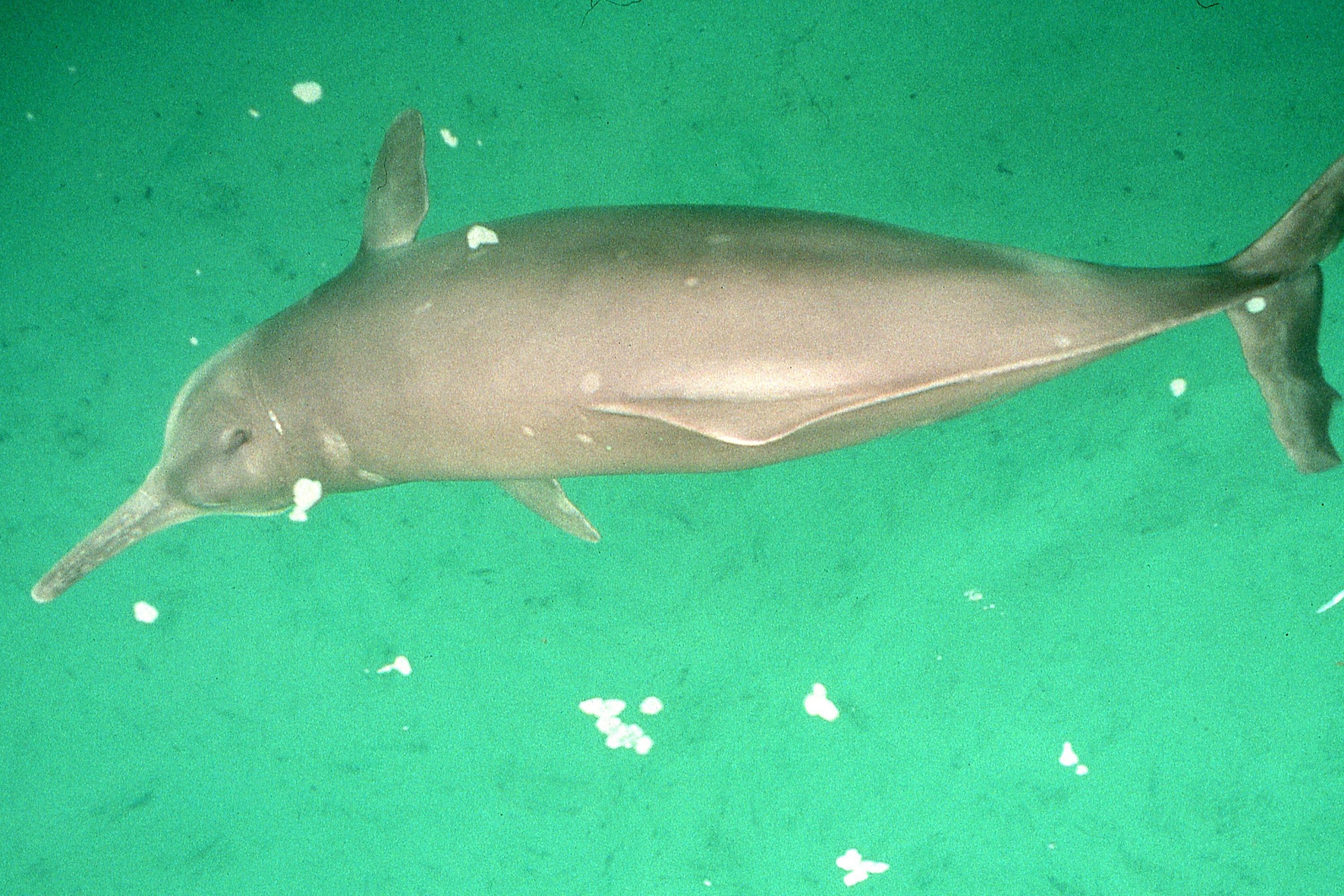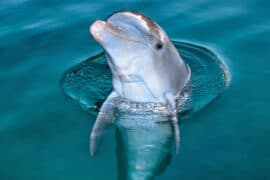Baiji
(Lipotes vexillifer)

Description
The baiji is a possibly extinct species of freshwater dolphin. It is thought to be the first dolphin species driven to extinction due to the impact of humans. Despite being listed as “critically endangered: possibly extinct” by the IUCN, this dolphin has not been seen in almost 20 years and several surveys of the Yangtze have failed to find it. In China, the species is also called the Chinese river dolphin, Yangtze river dolphin, Yangtze dolphin and whitefin dolphin. Nicknamed the "Goddess of the Yangtze" it was regarded as the goddess of protection by local fishermen and boatmen. It is not to be confused with the Chinese white dolphin (Sousa chinensis) or the finless porpoise (Neophocaena phocaenoides). The baiji population declined drastically in decades as China industrialized and made heavy use of the river for fishing, transportation, and hydroelectricity. It has been credibly claimed, after surveys in the Yangtze River during the 1980s, that baiji could be the first dolphin species in history that humans have driven to extinction. A Conservation Action Plan for Cetaceans of the Yangtze River was approved by the Chinese Government in 2001. Efforts were made to conserve the species, but a late 2006 expedition failed to find any baiji in the river. Organizers declared the baiji functionally extinct. The baiji represents the first documented global extinction of an aquatic "megafaunal" vertebrate in over 50 years since the demise of the Japanese sea lion (Zalophus japonicus) and the Caribbean monk seal (Neomonachus tropicalis) in the 1950s. It also signified the disappearance of an entire mammal family of river dolphins (Lipotidae). The baiji's extinction would be the first recorded extinction of a well-studied cetacean species (it is unclear if some previously extinct varieties were species or subspecies) to be directly attributable to human influence. Swiss economist and CEO of the baiji.org Foundation August Pfluger funded an expedition in which an international team, taken in part from the National Oceanic and Atmospheric Administration and the Fisheries Research Agency in Japan, searched for six weeks for signs of the dolphin. The search took place almost a decade after the last exploration in 1997, which turned up only 13 of the cetaceans.
Taxonomic tree:







